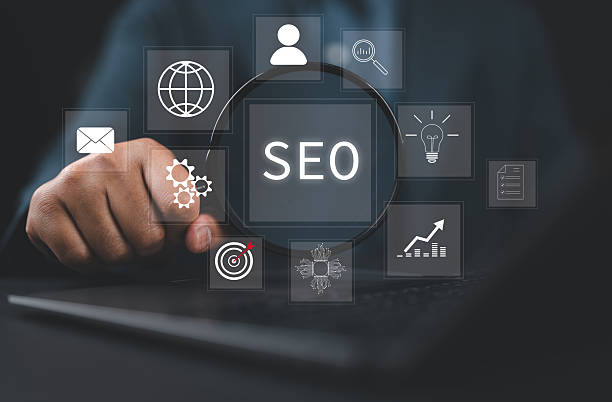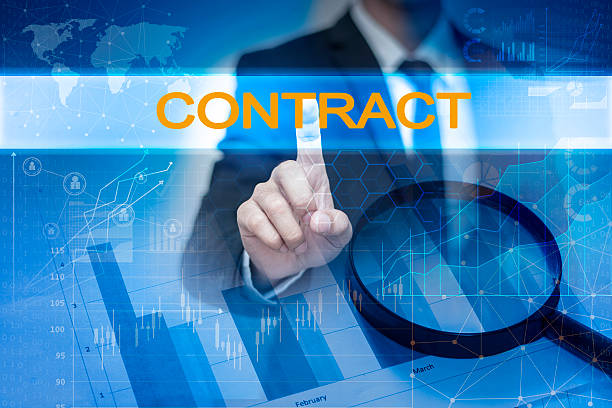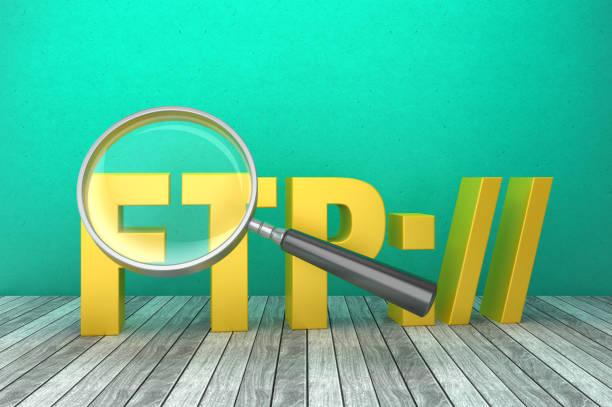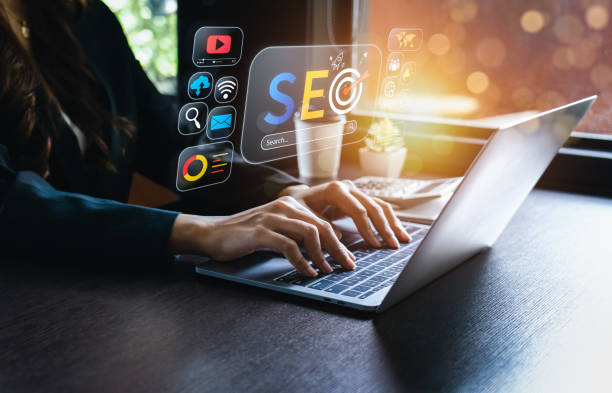A Comprehensive Introduction to On-Page SEO and Its Importance

#On-Page SEO#, or On-Page SEO, refers to a set of actions performed within your website to improve its ranking in search engines.
These actions include content optimization, technical site structure, and user experience.
In today’s highly competitive world, without strong on-page SEO, even the highest quality content may go unnoticed.
Search engine optimization is not limited to external link building or technical SEO; its main foundations are built upon the strong pillars of on-page SEO.
The importance of this part of SEO lies in the fact that you have complete control over all its elements; from keywords and titles to loading speed and URL structure.
This complete control allows you to meticulously and precisely optimize your pages for search engines and users.
The main goal of on-page SEO is to create content that is both understandable and rankable for search engines, and engaging and useful for users.
This delicate balance is the key to success in high rankings.
Search engines like Google are looking to provide the best and most relevant results to their users, and on-page SEO enables you to show that your content is exactly what users are looking for.
Undoubtedly, investing in a strong on-page SEO strategy can yield significant returns.
Therefore, a deep understanding of its details and techniques is vital for every webmaster.
This process is continuous and dynamic, requiring constant updates based on changes in search engine algorithms and user behavior.
Key aspects of on-page SEO include optimizing the page title (Title Tag), meta description (Meta Description), proper use of heading tags (H1-H6), image optimization, internal linking, and improving user experience.
Each of these elements alone can significantly impact a page’s ranking, and when they work synergistically, they provide unparalleled power to boost your site’s ranking.
Finally, it should be remembered that on-page SEO is not just a technique, but a comprehensive approach to providing the best possible content and experience to users and search engines.
This educational article will help you become familiar with the principles and techniques of on-page SEO step by step and implement them on your website to witness significant growth in your organic traffic.
This explanatory approach gives you a complete overview of this key concept in website optimization.
Does your current e-commerce website design not generate the expected sales for you?
Rasaweb is an expert in professional e-commerce website design!
✅ An attractive and user-friendly site aimed at increasing sales
✅ High speed and security for an ideal shopping experience⚡ Get a free consultation on online store design with Rasaweb!
Keywords and Their Research in On-Page Optimization

#Keyword Research# is the cornerstone of any successful on-page SEO strategy.
Choosing the right keywords means accurately understanding what your target audience is looking for and what phrases they use to search.
This process is not limited to finding high-volume keywords, but also includes analyzing the User Intent behind each search.
Is the user looking for information (Informational Intent), planning a purchase (Commercial Intent), or wanting to access a specific website (Navigational Intent)? Understanding these intentions helps you create content that precisely matches the audience’s needs.
Using tools like Google Keyword Planner, Ahrefs, SEMrush, or Moz Keyword Explorer can be very helpful in this regard.
These tools not only show search volume but also provide information about competition, related keywords, and Long-Tail Keywords.
Long-tail keywords, despite lower search volume, often have higher conversion rates and less competition, which makes them an ideal choice for an on-page SEO strategy.
After identifying relevant keywords, the next step is to intelligently integrate them into the page’s content.
This includes using the primary keyword in the page title, meta description, H1 tag, and naturally within the main text.
Additionally, using synonyms and semantically related keywords (LSI Keywords) helps search engines better understand the overall topic of your page and prevents Keyword Stuffing, which is penalized by Google.
Remember that Keyword Density alone is not an important metric; the quality and value of the content for the user are far more crucial.
A specialized and comprehensive content that addresses all aspects of a topic, even with lower keyword density, can achieve a better ranking.
This educational approach shows you how to build strong foundations for your on-page SEO optimization with precise keyword research.
This vital section helps you write content that not only search engines love, but also users benefit from and engage more with your site.
Content Optimization for Advanced On-Page SEO

#Optimized Content# is the beating heart of every successful website, and in advanced on-page SEO, this becomes doubly important.
Content optimization goes beyond merely arranging keywords; it means creating content that is both valuable to the reader and understandable and rankable for search engines.
The first step is to write text that is comprehensive, accurate, and unique.
Your content should answer all potential user questions and fulfill their needs.
Using a suitable structure including short paragraphs, bullet points, lists, and subheadings (H2, H3, H4) helps improve readability and makes it easier for users and search engines to scan and understand your content.
Heading tags not only specify the content structure but also indicate to search engines which sections are more important and what topics they discuss.
Furthermore, internal linking plays a vital role in on-page SEO.
By linking from relevant pages on your website to other pages, you help users navigate your site and signal to search engines which pages are more important and how they relate to each other.
This helps distribute “Link Juice” throughout your site and increases page authority.
Image optimization is also an essential component.
Using descriptive file names, relevant Alt Text, and compressing images to reduce size all contribute to site loading speed and image ranking in image search.
Finally, one should not overlook engaging and analytical content that encourages users to think and interact, increasing time on page.
Good content optimized for on-page SEO not only attracts more traffic but also significantly helps convert visitors into customers.
This specialized section provides you with important details.
| Element | Explanation | Importance in On-Page SEO |
|---|---|---|
| Page Title (Title Tag) | The most important On-page element displayed in the browser tab and search results. | Very High: The first thing the user and search engine see. Must include the main keyword. |
| Meta Description | A short summary of the page content displayed below the title in search results. | Medium: Does not directly affect ranking but is very effective on Click-Through Rate (CTR). |
| Heading Tags (H1-H6) | Structuring content using titles and subheadings. H1 for the main page title. |
High: Helps the search engine understand content structure and increases readability. |
| Body Content | The main text of the page that should be comprehensive, high-quality, and contain relevant keywords. | Very High: The core value for the user and search engine. Must meet user needs. |
| Image Alt Text | A textual description for images displayed if the image fails to load or for visually impaired users. | Medium: Helps search engines understand image content and is effective in image search. |
| Internal Links | Linking from one page on your site to another page on the same site. | High: Helps distribute ranking power across the site, improves user navigation, and assists crawlers in discovering pages. |
Technical Aspects of On-Page SEO and Website Structure

Alongside quality content, #technical aspects# of on-page SEO play a vital role in your website’s visibility.
These aspects help search engines easily Crawl, Index, and correctly understand your website’s content.
One of the most important of these aspects is URL structure.
Short, descriptive URLs containing relevant keywords are more optimized for both users and search engines.
For example, instead of disorganized URLs, use a structure like `yourwebsite.com/category/keyword-phrase`.
This structure also helps search engines understand your page hierarchy.
A logical and hierarchical website structure is also very important; this means that primary and more important pages should be close to the homepage and easily accessible.
Issues related to Canonical URLs must also be carefully managed.
When similar or identical content exists across multiple URLs (e.g., different versions of a product), by using a canonical tag, you tell the search engine which URL is the original and authoritative version.
This prevents “Duplicate Content” issues and transfers ranking power to the main page.
Furthermore, ensuring your website is Responsive and Mobile-Friendly is now a necessity for on-page SEO.
Given the increasing use of mobile devices for searching, Google has focused on Mobile-First Indexing, meaning the mobile version of your site is prioritized for ranking.
Using a robots.txt file and an XML Sitemap is also crucial for guiding search engine crawlers.
The robots.txt file tells crawlers which parts of your site should not be crawled (e.g., login pages), while the XML Sitemap is a comprehensive list of all pages you want to be indexed.
These technical guidance aspects ensure that your content SEO efforts bear fruit and that search engines can process your site in the best possible way, ultimately contributing to the overall improvement of your on-page SEO.
Did you know that 94% of the first impression of a company is related to its website design?
Rasaweb, by providing professional corporate website design services, helps you create the best first impression.
✅ Create a professional and trustworthy image of your brand
✅ Easier attraction of potential customers and improvement of online standing
⚡ Get a free consultation on corporate website design
Loading Speed and User Experience in On-Page SEO
![]()
#Loading Speed# and #User Experience# (User Experience or UX) are two key factors that not only affect user satisfaction but also play a significant role in the success of your website’s on-page SEO.
Google is increasingly focusing on user experience-related factors, and page loading speed is one of the most important of these.
A slow website can lead to a high Bounce Rate, as users are impatient to wait for pages to load.
Studies have shown that even a few seconds of delay in page loading can significantly negatively impact conversion rates and organic traffic.
To improve speed, you can use techniques such as image compression, code optimization (CSS, JavaScript, HTML), browser caching, and leveraging Content Delivery Networks (CDN).
Tools like Google PageSpeed Insights and Core Web Vitals can help you identify and resolve speed issues.
Core Web Vitals are a set of metrics from Google that measure website performance from a user experience perspective, including LCP (Largest Contentful Paint), FID (First Input Delay), and CLS (Cumulative Layout Shift).
Improving these metrics directly helps SEO ranking.
Beyond speed, a good user experience includes responsive design, easy navigation, readable and engaging content, and minimizing distracting elements like unwanted pop-ups.
When users can easily move around your website, find the information they need, and enjoy interacting with it, they are more likely to stay on your site longer and view more pages.
These behaviors send positive signals to search engines, indicating the quality and value of your website.
Increasing Dwell Time and decreasing bounce rate are among the factors Google considers for ranking pages.
Therefore, by analyzing user behavior (through tools like Google Analytics) and continuously optimizing user experience, you can not only increase your users’ satisfaction but also significantly improve your site’s ranking in search results.
This analytical approach helps you gain a deeper insight into how users interact with your website and identify and fix weaknesses.
The Role of Internal and External Linking in Ranking Improvement

#Linking#, both internal and external, is considered the backbone of on-page SEO and overall site optimization.
Internal Linking means creating links between different pages within a single domain.
This process is vital for on-page SEO for three main reasons: First, it helps search engines better understand your website’s structure and hierarchy.
Through internal links, Google crawlers can discover and index all your pages.
Second, internal linking helps distribute “Link Juice” or “Page Authority” throughout your website.
Pages that receive more internal links from authoritative pages have a higher chance of ranking better.
Third, and perhaps most importantly, internal links help improve user experience.
Users can easily navigate from one page to another related page and discover more information, which leads to increased time on site and reduced bounce rate.
Using descriptive and relevant Anchor Text in internal links is very important, as it shows both search engines and users what the destination page is about.
However, the role of External Linking, while not directly part of on-page SEO, has an indirect and significant impact on it.
External links are discussed in two forms: Outbound Links and Backlinks.
Outbound links to other sites (especially reputable and relevant sites) can signal to search engines that your content is well-researched and comprehensive and that you use credible sources.
This helps increase the credibility of your content.
On the other hand, backlinks, which are links from other sites to your site, are among the most important ranking factors in overall SEO.
Although acquiring backlinks is more related to off-page SEO, high-quality content optimized through your on-page SEO increases the chance of receiving natural and high-quality backlinks.
Therefore, a comprehensive SEO strategy must pay special attention to both types of linking to help improve the overall site ranking.
This explanatory approach helps you understand how links, both internal and external, are interconnected in the SEO ecosystem and can help your website grow.
Review and Analysis of Popular On-Page SEO Tools

For a successful on-page SEO strategy, #using the right tools# is essential.
These tools allow you to analyze your website’s performance, identify and fix issues, and find new optimization opportunities.
The first and perhaps most important tool is Google Search Console.
This free tool from Google provides vital information about how Google views your site, including indexing status, crawl errors, search performance (showing keywords that drive traffic), and security issues.
Google Analytics is also an essential tool for analyzing user behavior.
Using it, you can obtain information about incoming traffic, time on pages, bounce rate, and user navigation paths.
This data helps you optimize your content and site structure based on real user needs.
In addition to Google’s free tools, there are several other powerful paid tools that help you conduct deeper analyses of on-page SEO.
Ahrefs and SEMrush are two comprehensive tools that offer extensive features, including keyword research, backlink analysis, competitor analysis, and on-page SEO status checks.
These tools can help you discover new keywords, find technical and content-related issues, and monitor ranking progress.
Screaming Frog SEO Spider is a desktop tool that allows you to crawl your website locally and identify technical issues such as broken links, improper redirects, duplicate titles and meta descriptions, and indexing problems.
This tool is very useful for checking the overall technical health of a site in terms of on-page SEO.
Using a combination of these tools gives you a comprehensive and analytical view of your website’s on-page SEO status and enables you to make data-driven decisions to improve your performance.
This section provides practical guidance for choosing and using the best tools for your SEO strategy.
| Tool Name | Type | Key Features for On-Page SEO | Advantages | Disadvantages |
|---|---|---|---|---|
| Google Search Console | Free, Google | Crawl reports, Indexing, Search performance (keywords), Mobile Usability | Direct data from Google, essential for any website | Data sometimes updated with delay, more limited capabilities compared to paid tools |
| Google Analytics | Free, Google | User behavior analysis, Incoming traffic, Bounce rate, Time on site, Traffic sources | Comprehensive user behavior data, essential for understanding user interaction | Requires integration with other tools for deep SEO analysis |
| Ahrefs | Paid, Comprehensive | Keyword research, Competitor analysis, Backlink analysis, Site Audit (On-page SEO) | Comprehensive and powerful, high accuracy in backlink and keyword data | High cost, user interface might be complex for beginners |
| SEMrush | Paid, Comprehensive | Keyword research, Competitor analysis, Site Audit, Content tools, SMM and PPC tools | A very comprehensive and practical tool for all aspects of digital marketing | High cost, might be overkill for focusing solely on on-page SEO |
| Screaming Frog SEO Spider | Freemium (limited free version), Desktop tool | Website crawling, Identifying broken links, Redirects, Duplicate titles and meta descriptions | Very powerful for Technical SEO Audit, easy to install and use | Requires paid version for very large websites, complex user interface for beginners |
Google Algorithm Updates and Their Impact on On-Page SEO

The world of on-page SEO, and SEO in general, is constantly evolving, taking on new forms with the emergence of #new trends# and technologies.
One of the biggest trends on the horizon for on-page SEO is the increasing role of Artificial Intelligence (AI) and Machine Learning in understanding content and user intent.
Search engines, using more advanced algorithms, are capable of a deeper understanding of content meaning and the complexities of natural language.
This means that merely using keywords is no longer enough; instead, you must produce content that comprehensively and accurately answers user questions and provides real value.
This includes producing topical content, not just keyword-focused content.
Voice Search is another growing trend that impacts on-page SEO.
Users in voice searches use more natural language and complete sentences.
Therefore, optimizing content to answer these types of queries (such as using frequently asked questions and answers in content) is becoming increasingly important.
Video SEO will also be an important part of the future of on-page SEO, with the increasing popularity of video content.
Optimizing video titles, descriptions, tags, and transcripts for search engines helps your video content get visibility.
Also, increased focus on Entity SEO, meaning understanding the relationships between concepts and entities, helps search engines better grasp semantic connections and provide more accurate results.
This requires creating content that not only includes keywords but also addresses logical relationships between topics.
Ultimately, the focus on User Experience (UX) will remain at the core of on-page SEO.
Websites that provide the best and smoothest experience to their users will be more successful in the long run.
This includes loading speed, mobile compatibility, easy navigation, and attractive visual design.
By following these analytical and entertaining trends, you can ensure that your on-page SEO strategy is also optimized for the future.
Tired of your e-commerce website not generating the income it could for you? Rasaweb, an expert in professional e-commerce website design, solves this problem once and for all!
✅ Increase sales and revenue
✅ High loading speed and unparalleled user experience
⚡ Get a free consultation on e-commerce website design
Common Mistakes in On-Page SEO and How to Avoid Them

On the path to on-page SEO optimization, making common mistakes can render your efforts fruitless.
Awareness of these errors and how to avoid them can play a significant role in the success of your strategy.
One of the most common #common mistakes# is Keyword Stuffing.
Some webmasters mistakenly believe that by excessively repeating keywords in content, they will achieve a better ranking, whereas this practice is recognized by Google as a spam technique and leads to site penalties.
Instead, keywords should be used naturally within fluid and meaningful text.
Another mistake is ignoring page loading speed.
As mentioned earlier, slow speed not only drives users away but also sends negative signals to search engines.
Furthermore, improper use of heading tags or the absence of a logical structure in content are other mistakes that can make readability and content comprehension difficult for both users and search engine crawlers.
Each page should have a unique H1 tag that includes the main keyword, and subheadings (H2, H3, etc.) should be used to segment content and improve readability.
Insufficient or incorrect internal linking can also harm the flow of “link juice” within the site and prevent pages from being discovered by crawlers.
Also, neglecting image optimization (not using Alt Text or not compressing images) can negatively impact site loading speed and image ranking.
Producing low-quality or duplicate content is also a grave mistake.
Google rewards unique, comprehensive, and valuable content for the user.
Thin Content or Duplicate Content is severely penalized and lowers your site’s ranking.
To avoid these problems, always focus on providing the best user experience and producing high-quality, original content, and regularly audit your site for technical on-page SEO issues.
This thought-provoking content approach helps you reflect on common mistakes and avoid them.
The Future of On-Page SEO and New Trends

The future of on-page SEO, like the digital world itself, is constantly evolving and taking on new forms with the emergence of #new trends# and technologies.
One of the biggest trends appearing on the horizon for on-page SEO is the increasing role of Artificial Intelligence (AI) and Machine Learning in understanding content and user intent.
Search engines, using more advanced algorithms, are capable of a deeper understanding of content meaning and the complexities of natural language.
This means that merely using keywords is no longer enough; instead, you must produce content that comprehensively and accurately answers user questions and provides real value.
This includes producing topical content, not just keyword-focused content.
Voice Search is another growing trend that impacts on-page SEO.
Users in voice searches use more natural language and complete sentences.
Therefore, optimizing content to answer these types of queries (such as using frequently asked questions and answers in content) is becoming increasingly important.
Video SEO will also be an important part of the future of on-page SEO, with the increasing popularity of video content.
Optimizing video titles, descriptions, tags, and transcripts for search engines helps your video content get visibility.
Also, increased focus on Entity SEO, meaning understanding the relationships between concepts and entities, helps search engines better grasp semantic connections and provide more accurate results.
This requires creating content that not only includes keywords but also addresses logical relationships between topics.
Ultimately, the focus on User Experience (UX) will remain at the core of on-page SEO.
Websites that provide the best and smoothest experience to their users will be more successful in the long run.
This includes loading speed, mobile compatibility, easy navigation, and attractive visual design.
By following these analytical and entertaining trends, you can ensure that your on-page SEO strategy is also optimized for the future.
Frequently Asked Questions
| Row | Question | Answer |
|---|---|---|
| 1 | What is On-Page SEO? | On-Page SEO refers to a set of actions performed within a website (on its pages) to improve its ranking in search engine results. This includes optimizing content, site structure, and HTML codes. |
| 2 | Why is On-Page SEO important? | On-Page SEO helps search engines better understand page content and determine if that page is relevant and valuable for user searches. This better understanding leads to higher rankings. |
| 3 | What is the first and most important step in On-Page SEO? | Keyword Research is the most important initial step. By finding appropriate keywords, targeted content relevant to user needs can be produced. |
| 4 | What is the role of the Title Tag in On-Page SEO? | The Title Tag is one of the most important ranking factors and should include the main keyword. This tag is displayed as the page title in search results and influences the Click-Through Rate (CTR). |
| 5 | What is the importance of the Meta Description? | The Meta Description does not directly affect ranking, but by providing an attractive summary of the page content in search results, it can entice users to click, thereby increasing the Click-Through Rate (CTR). |
| 6 | Why is using headings (H1, H2, etc.) important in content? | Headings help structure content and improve readability for users and search engine crawlers. Using keywords in headings also helps search engines better understand the topic. |
| 7 | What does Image Optimization in On-Page SEO include? | It includes compressing images to reduce size, using descriptive and relevant file names, and filling the Alt tag (alternative text) with relevant keywords to help search engines understand image content. |
| 8 | What is Internal Linking in On-Page SEO? | Internal linking refers to creating links between different pages of a website. This helps distribute page authority (Link Equity), improves user experience, and assists search engine crawlers in discovering new pages. |
| 9 | Why is Page Speed important for On-Page SEO? | Page loading speed is a direct ranking factor and significantly affects user experience. Slow pages can lead to an increased Bounce Rate and reduced user engagement. |
| 10 | What role does quality content play in On-Page SEO? | Quality, comprehensive, unique, and valuable content for the user, is the core of On-Page SEO. This content not only attracts and retains users but also sends positive signals to search engines, contributing to better rankings. |
And other services of Rasaweb Advertising Agency in the field of advertising
Smart Marketplace: Designed for businesses seeking online growth through intelligent data analysis.
Smart Website Development: A fast and efficient solution for increasing website visits with a focus on intelligent data analysis.
Smart Custom Software: Designed for businesses looking to increase click-through rates through an SEO-driven content strategy.
Smart UI/UX: A professional solution for improving SEO ranking with a focus on an SEO-driven content strategy.
Smart SEO: A fast and efficient solution for online growth with a focus on using real data.
And over hundreds of other services in the field of internet advertising, advertising consultation, and organizational solutions
Internet Advertising | Advertising Strategy | Advertorial
Resources
Comprehensive Guide to On-Page SEO on Virgool On-Page SEO Article on Iran Host On-Page SEO Checklist (Namatek) What is On-Page SEO on Rasekhoon
? Transform your business in the online world with Rasaweb Afarin Digital Marketing Agency. From user-friendly website design to comprehensive SEO and content marketing strategies, we are with you to make your brand shine.
📍 Tehran, Mirdamad Street, next to Bank Markazi, Southern Kazeroon Alley, Ramin Alley, No. 6




